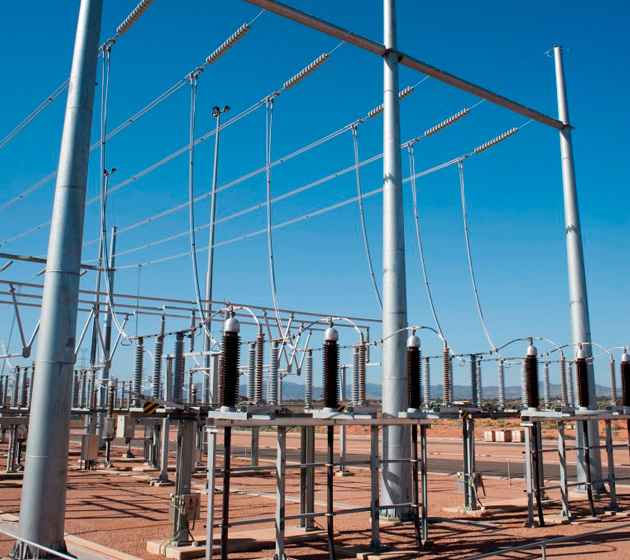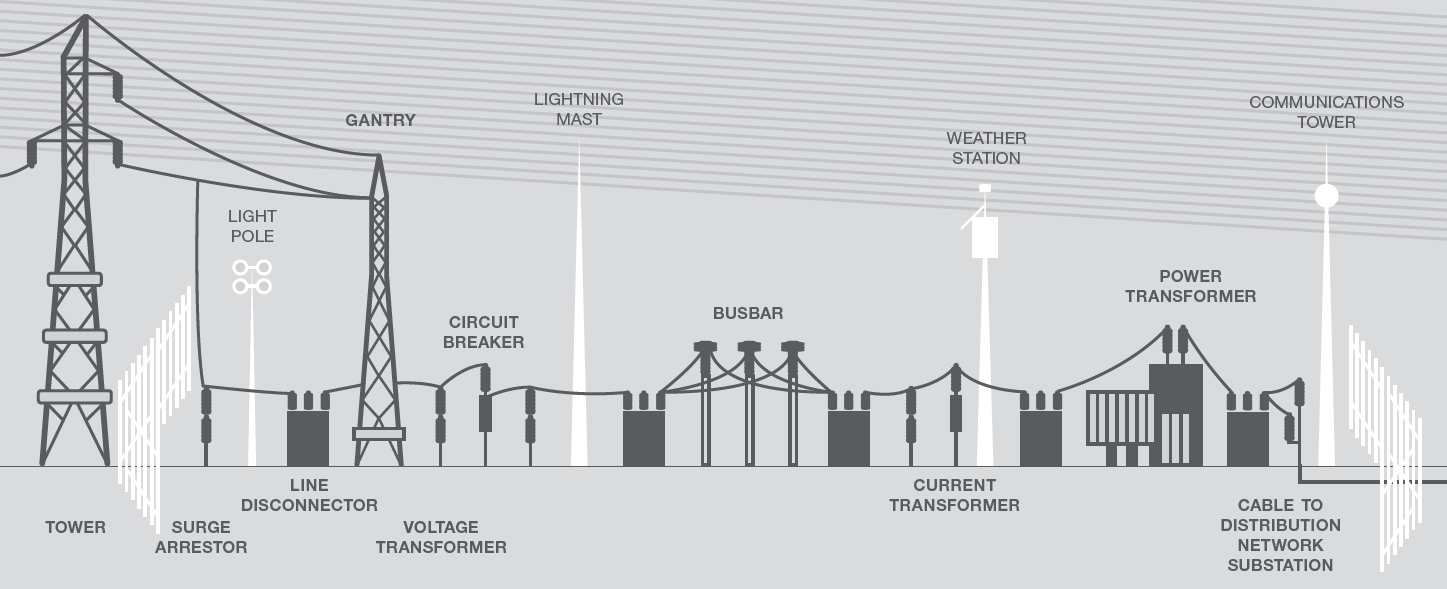Transmission Substations
ElectraNet has 91 substations located around South Australia, helping move high-voltage power over long distances, to where it is needed.
Our substations act as connection points between the transmission network and the electricity generators, large load customers and the lower voltage distribution network it serves. As substations do not generate power, they are generally very quiet during operation. Typically, the low hum from a transformer can only be heard when standing near the substation site’s boundary.
What's in a substation?
Transformers
Transformers are the largest single piece of equipment in a substation.
They work by increasing the voltage of the electricity produced by the generator, from an average of between 12,000 and 22,000 Volts, up to transmission voltages of 132,000 and 275,000 Volts, and then back down to 66,000, 33,000 or 11,000 Volts to enter the distribution network.
Substations also include small buildings for staff facilities and technology for protection and control systems. This allows the site to be remotely monitored and operated from our central control room.
Switchyards
Substations without transformers are called switchyards. A switchyard is remotely operated to re-route power supplies where there is an immediate or critical need.

How a substation works
ElectraNet’s transmission lines move electricity over long distances, at 132 or 275 kV, before arriving at a substation where the voltage is lowered.
Once the voltage has been lowered to 66, 33 or 11 kV, the electricity is moved through to large industrial customers or the distribution network where it is taken to homes and businesses.

Light poles provide lighting for crews that might need to attend the site in the event of a fault.
Surge arrestors protect equipment within the substation from any voltage spikes on the transmission lines.
Line disconnectors allow transmission lines and equipment within the substation to be safely isolated for maintenance work.
Gantries guide transmission lines into the substation.
Voltage and current transformers measure voltage and current entering and moving through the substation.
Circuit breakers are automatic switches that interrupt electrical flow to de-energise equipment and clear faults.
Lightning masts attract lightning away from sensitive substation equipment.
Busbars are conductors which connect equipment within the substation.
Weather stations provide real time information about localised conditions which could affect the safe and reliable operation of the transmission network.
Power transformers increase or reduce voltage, depending on whether the substation is an entry point to the transmission network or an exit to the distribution network.
Communications towers allow substations to be remotely monitored and operated.
Safety around substations
Our multi-layered security and safety measures around substations ensure public safety, protect the integrity of the equipment and assure the ability of the transmission network to ‘keep the lights on’. While it is quite safe to live near, pass by, or view a substation from outside the perimeter fence line, it is very dangerous for a person without appropriate training to enter a substation.
Downloads
If you notice anything suspicious around ElectraNet’s substations, please contact us toll-free on 1800 243 853.

